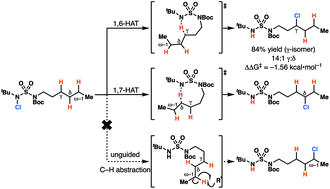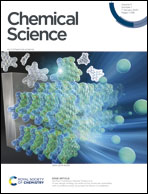Sulfamides direct radical-mediated chlorination of aliphatic C–H bonds†
Abstract
Given the prevalence of aliphatic amines in bioactive small molecules, amine derivatives are opportune as directing groups. Herein, sulfamides serve as amine surrogates to guide intermolecular chlorine-transfer at γ-C(sp3) centers. This unusual position-selectivity arises because accessed sulfamidyl radical intermediates engage preferentially in otherwise rare 1,6-hydrogen-atom transfer (HAT) processes through seven-membered transition states. The site-selectivity of C–H abstraction can be modulated by adjusting the steric and electronic properties of the sulfamide nitrogen substituents, an ability that has not been demonstrated with other substrate classes. The disclosed reaction relies on a light-initiated radical chain-propagation mechanism to oxidize C(sp3)–H bonds efficiently.

- This article is part of the themed collections: Celebrating five years of ChemRxiv, Most popular 2019-2020 organic chemistry articles and New reactivity in organic chemistry


 Please wait while we load your content...
Please wait while we load your content...